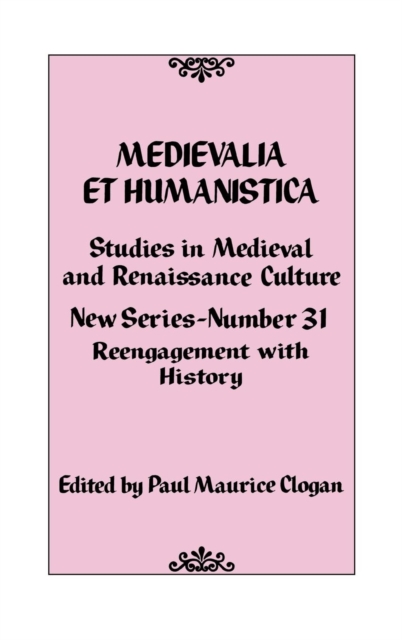
Medievalia et Humanistica No. 31 : Studies in Medieval and Renaissance Culture Hardback
Edited by Paul Maurice Clogan
Part of the Medievalia et Humanistica Series series
Hardback
Description
Since its founding in 1943, Medievalia et Humanistica has won worldwide recognition as the first scholarly publication in America to devote itself entirely to medieval and Renaissance studies.
Since 1970, a new series, sponsored by the Modern Language Association of America and edited by an international board of distinguished scholars and critics, has published interdisciplinary articles.
In yearly hardbound volumes, the new series publishes significant scholarship, criticism, and reviews treating all facets of medieval and Renaissance culture: history, art, literature, music, science, law, economics, and philosophy. Volume thirty-one in the new series contains six original and refereed articles that represent a reengagement with history.
They focus on a variety of topics, ranging from reception theory in Andreas Capellanus and the ideal sovereign in Christine de Pizan to peasant rebel leaders in late-medieval and early-modern Europe.
Don Monson's article makes good usage of Jauss's reception theory and analyzes the third Dialogue of Book I, Chapter 6 of De Amore in a thorough and intelligent way.
Important aspects of the relationship between "scientific" Latin treaties and Provencal courtly poetry are neatly demonstrated. Karen Gross examines structural and thematic resemblances between the Aeneid and De Casibus, arguing that Anchises' "pageant of future Roman worthies" (Aen.
VI) is connected to the frame structure of De casibus.
The author is interested in "global similarities, not local verbal echoes," and believes that the "structure resonances" have implications for "how Boccaccio understood the interaction between history and poetry, between the living and the dead." Especially thought-provoking and original are the discussion of the motif of father/son piety and commemoration and the contrast of Virgil's fortuna in Roman history and Boccaccio's in world history. Daisy Delogu's article on Christine de Pizan is a timely one, and also represents reengagement with history th
Information
-
Available to Order - This title is available to order, with delivery expected within 2 weeks
- Format:Hardback
- Pages:192 pages
- Publisher:Rowman & Littlefield
- Publication Date:29/09/2005
- Category:
- ISBN:9780742549494
Information
-
Available to Order - This title is available to order, with delivery expected within 2 weeks
- Format:Hardback
- Pages:192 pages
- Publisher:Rowman & Littlefield
- Publication Date:29/09/2005
- Category:
- ISBN:9780742549494










